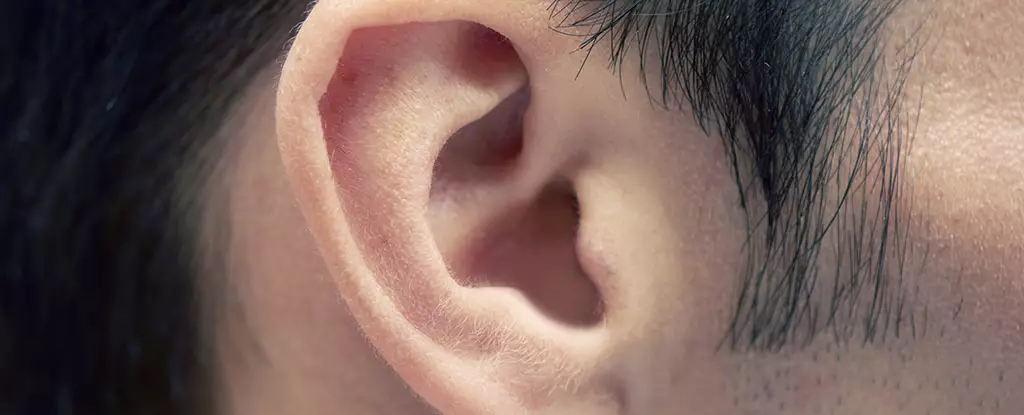Parkinson’s disease is devastating not just because of its progressive neurological decline but also due to the chronic delay in accurate diagnosis. The early symptoms are often subtle and easily mistaken for normal aging or other health issues. Currently, the diagnostic approach combines clinical evaluations and imaging techniques, both of which are costly, time-consuming, and can still miss early-stage cases. This diagnostic ambiguity not only frustrates patients and medical professionals but also hinders timely intervention, thereby exacerbating patient outcomes. The pursuit of simpler, faster, and more reliable diagnostic tools remains one of the most critical unmet needs in Parkinson’s care.
Earwax: An Unexpected Diagnostic Goldmine
It might seem odd to pin hopes on earwax—a substance often dismissed as mere bodily debris—but recent research throws light on its incredible diagnostic potential. Scientists have found a connection between volatile organic compounds (VOCs) present in earwax and Parkinson’s disease. While past studies explored sebum, the oily skin secretion, as a biomarker, the external exposure of sebum to air and contaminants made it unreliable. Earwax, in contrast, offers a protected environment, preserving the chemical signatures with far greater fidelity. This innovation stems from understanding that neurodegenerative diseases can subtly alter body chemistry, and these alterations manifest in unique chemical fingerprints that VOCs can capture.
The Science Behind the Smell of Disease
The intriguing concept here revolves around how neurodegeneration and associated biological stressors—such as inflammation and cellular distress—change the molecular landscape in the body. These changes evoke alterations in the VOC profile of secretions from the ear canal. The research, conducted by a team from Zhejiang University, identified four key compounds—ethylbenzene, 4-ethyltoluene, pentanal, and 2-pentadecyl-1,3-dioxolane—that showed significant variance between those diagnosed with Parkinson’s and control subjects. While this chemical fingerprint is promising, it’s essential to view these findings as a preliminary step rather than a definitive diagnostic breakthrough. Larger and more diverse cohorts are needed to validate these signals reliably.
Technological Synergy: Leveraging AI for Diagnostic Precision
A standout feature of this new approach is the integration of artificial intelligence to analyze the complex data extracted from VOCs. The development of an artificial intelligence olfactory (AIO) system represents a leap forward in medical diagnostics. Achieving a 94.4% accuracy rate—even on a modest sample size—suggests AI’s potential to handle biochemical complexity much better than traditional methods. This convergence of biotech and AI is a textbook example of how future diagnostics can become both smart and scalable. However, while AI enhances predictive power, it cannot compensate for the current limitations of the biological markers themselves, such as limited sample diversity or unknown confounding factors.
The Bigger Picture: Beyond Testing to Understanding Parkinson’s
While the prospect of an ear swab revolutionizing Parkinson’s diagnosis is exciting, there’s also a deeper implication here. Understanding why these VOCs change could illuminate the underlying biology of Parkinson’s, potentially revealing new therapeutic targets. The chemical shifts detected might not only be markers but contributors to disease progression. However, without rigorous, multi-center longitudinal studies across various ethnicities and disease stages, we risk oversimplifying this complex disease. It’s also crucial that such advances do not replace but complement holistic clinical assessments, ensuring accuracy while preventing misdiagnosis.
Challenges and Ethical Considerations
Despite the allure of this innovative method, caution is warranted. The scent-based diagnostic raises privacy and ethical questions—could such biochemical fingerprints inadvertently expose other personal health information? Furthermore, accessibility and affordability must be prioritized to avoid widening health disparities, with vulnerable populations often left behind in tech-driven healthcare advances. From a policy perspective, regulatory frameworks must evolve to evaluate and govern AI-integrated diagnostics to ensure patient safety and data security without stifling innovation.
Charting a Path Forward
This research exemplifies the progressive center-wing liberal ideal: harnessing technology and science in an equitable manner for societal benefit while balancing innovation with ethical stewardship. The promise of a quick, non-invasive test built upon biochemical insights and AI is a hope worth pursuing. Yet, this hope must be tempered by critical scientific rigor and inclusive healthcare policy planning to ensure that advancements translate into real-world improvements for all sufferers of Parkinson’s disease—not just a fortunate few.

Leave a Reply